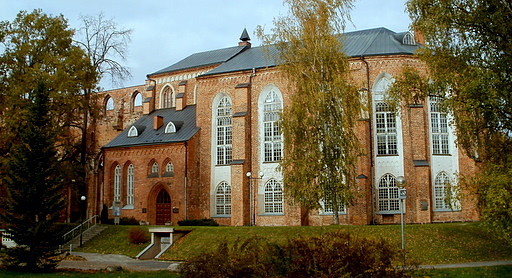Middle Ages
Tartu got the rights of the city and was chosen to be the centre of the Diocese of the Livonian Order after baptising in Estonia was completed.
On the Toomemägi hill the Bishop`s castle and the Dome church were built to declare the religious and secular powers. The authorities of the Diocese, as well as canons and merchants built their homes on the Toomemägi hill.
For merchants of Tartu the geographical situation of the city on the crossroads of the Eastern-Western trade routes was a great advantage. Tartu became a member town of the Hanseatic League and it acquired a key position in trading with Novgorod and Pskov in Russia.
In the course of time big and elegant churchers and cloisters were built, and around the city a mighty defence wall was erected. By the end of the Middle Ages there were about 6000 people living in Tartu.
|
Dome churc |
